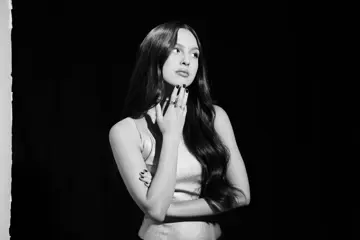Today’s GFK radio ratings were the final snapshot of where radio listening is at for the year and have starkly shown the ongoing problems facing new ABC Head of Audio Ben Latimer that have led to the wholesale changes dealt out across triple j last week.
What The triple j Numbers Say
In Sydney, a slight rise in the target 18-24 demographic to 4.4 will hopefully show the path is back up after an annus horribilis for the station, clawing back from historical lows this year.
In Melbourne the station has had a rise to 8.1, Perth was up to 9.2, Brisbane was down to 7.9 and Adelaide saw a big drop to 8.2.
The station has always been the lightning rod for criticism due to its over-indexing with listeners 25+, but 2023 has seen twenty-year historic lows in its 18-24 demographic as pressure mounts.
Looking back at shares over the last twenty years, this week’s survey eight results is unprecedented in Sydney, showing a share drop of nearly threefold in just two years as the station struggles to regain its audience.

The 18-24 numbers are the lowest in the twenty years of data, with the station dropping from 13.5 in 2021 to just 4.4 in today’s survey.
Don't miss a beat with our FREE daily newsletter
While the number has ebbed and flowed across the years, the station rarely broke the 10% share barrier between 2010 and 2022 apart from the impact of COVID in 2020.
The numbers are not just confined to Sydney, with all capital cities bar Adelaide seeing a sharp decline in the last twelve months in the 18-24 demographic. Sydney and Brisbane are the steepest with their shares halving or more in just twelve months while Perth is down 32%, Melbourne is down 12% and Adelaide is up 22%.
And it’s not just the share that’s an issue. The station’s cumulative listenership has also tanked in every market in the last twelve months, suggesting that they are not just listening less, they are in many cases switching off.
While most capital cities have shed around 20-25% of their listeners (apart from Perth which has held up better), Sydney has shed a whopping 36% in just twelve months (comparing Survey 8 data).
The National Problem
When breaking down the numbers, it’s easy to graft individual market issues onto a national station. There are always competition issues individual to each market, there are historical reasons why some music styles resonate more in certain areas and, of course, there’s a much wider problem at play of young people moving away from radio more generally. It’s a wicked problem for any national station.
The numbers clearly show a content problem though that needs addressing in some way. While it’s not terminal outside of Sydney, shedding that number of listeners over just one year is a big issue for any station. In Perth, where their cume is holding better, their share is still down. In Adelaide where their share is up, their cume is down, so no matter where you are in Australia, listeners are either switching off or listening less.
When looking at individual shows, it’s clear to see why Good Nights will not be returning in 2024. At just 2.8% in Sydney against Nova’s Smallzy’s Surgery on 5.7, 5.5 for Kiis’ Nights with Mitch Churri and 2Day FM’s 6.0 for Jimmy & Nath, the show is simply not cutting through when compared with far higher numbers in previous years.
Breakfast is also an issue, floating below the station average in almost all markets. Latimer earlier suggested that 2024 would bring a focus on “working more closely with our talent-led shows, particularly Breakfast and Drive” which is presumably in response to the numbers.
The Cada Problem
There’s no question though, that something else is going on in Sydney specifically and that problem could well be ARN’s Cada.
The station is technically national with a DAB+ frequency in all capital cities, but its 96.1 FM frequency in Western Sydney and stronger local marketing have seen it really only find a substantive audience in Sydney.
The station launched with great fanfare as a station that would be playing hip-hop and R&B to cater to an under-30s market. They hired TikTok talent like Flex & Froomes and came out of the gates with a big marketing push and a multi-platform approach.
The station launched in March 2022 and by survey eight at the end of the year, held a cumulative audience of 113k on DAB+ across Sydney.
The Campbelltown licence area survey released in October of this year showed a further 28k in that smaller region alone on FM radio. Survey eight 2023 sees that cumulative DAB+ number growing to 179k, massive year-on-year growth.
In the 18-24 demographic, Cada now has 27k on Sydney DAB+ alone and a solid 36k in 10-17s. When triple j’s 18-24s cume is 70k, a chunk like that out of your core audience has got to hurt.
The strong growth comes as Cada pivoted away from its pure hip hop and R&B remit at the beginning of the year, embracing more electronic and pop offerings. Their currently most played tracks include Tate McRae, James Hype, Sonny Fodera, Troye Sivan, Dom Dolla and Jax Jones, creating a broader appeal that appears to be cutting into triple j’s traditional base.
With the might of commercial radio research behind them, Cada seems to be refining a clear music strategy that is starting to find an audience.
Ironically, what it hasn’t found is advertisers. The station was largely (and quietly) gutted over the last month, with ARN Chief Content Officer telling Media Week that “despite the strong survey results and the audience growth we’ve seen through the DAB results, the achievement we were getting from an audience perspective wasn’t translating into the desired commercial outcomes.”
Their breakfast team for 2024 has yet to be announced and Flex and Froomes did not have their contracts renewed. Emily Copeland, Cada’s founding GM and more recently ARN’s Director of Audience Innovation and Music Partnerships has also reportedly left the building.
Campbell said “It won’t sound like a cut-down, badly put-together radio station,” said Campbell. “It will sound like CADA, like a proper radio station. It will have fewer resources behind the scenes, but that doesn’t mean that the output will suffer at all.”
The Path Forward
The opportunity with Cada’s on-air capacity and resourcing being cut is for triple j to reclaim some of its audience.
It will be a source of debate whether the previous triple j management team already had the capacity and plans to face the challenge, but regardless, Latimer’s changes mean that the station has a unique challenge and opportunity to make changes and strengthen its position, both in Sydney and nationally.
For the music industry, a strong triple j committed to Australian music is a key plank in the success of our local artists. The hope is that the changes that have been made and those that are still to come are able to lift the audience to new highs, while not forgetting the essence of the brand and why they exist in the first place.
For Cada, reliant on advertising dollars that have not been forthcoming, the path forward seems far less certain.
What the last two years of experimenting has proven, is that if you put together a playlist of music that resonates with young people, they WILL consume radio.
The trick for Australian music is to have as many strong platforms as possible giving young people access to music they otherwise wouldn’t have heard. It has been triple j’s brand promise and forte for decades and will continue to be its strength in what is hopefully a new period of growth in 2024.
Until then, the main radio game in Sydney will continue to be battled out elsewhere, with Kyle & Jackie O beating out 2GB’s Ben Fordham. The battle for music radio is quieter and gets less coverage, but is no less important to get right for the sake of music culture. Our Australian artists are waiting.
















